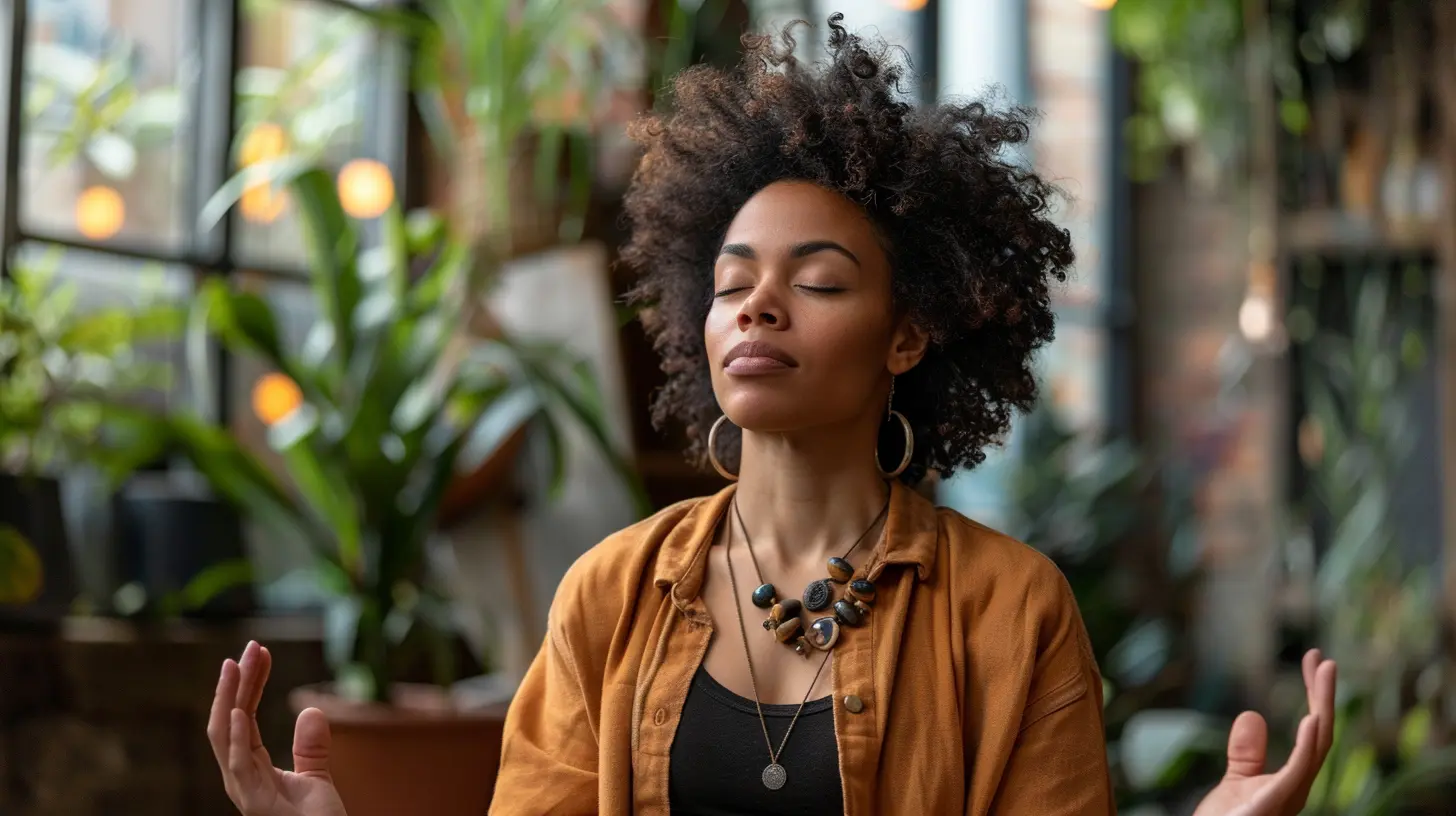15 January 2025
Hey there! Let me ask you something: how often do you feel like you're just going through the motions? Like you're stuck on autopilot—your body is here, but your mind is elsewhere. We’ve all been there, juggling work, family, and a million other things, barely taking a moment to breathe. But here's the thing: life isn’t happening in your next meeting or your to-do list. It’s happening right now. This is where mindfulness comes in.
Mindfulness is all about being present and fully engaged in the moment—without judgment or distractions. It’s like hitting the “pause” button on the chaos and tuning in to what’s happening right now. Sounds simple, right? While the concept is straightforward, mastering mindfulness takes practice and a little guidance. That’s where this beginner’s guide comes in handy.
Whether you’ve heard the buzzword a hundred times or you’re totally new to the idea, this article is here to help you tap into the healing power of mindfulness. Let’s dive in!
What Exactly Is Mindfulness?
Before we go any further, let’s get one thing straight: mindfulness isn’t about emptying your mind or achieving some Zen-like enlightenment (cue the image of a monk meditating on a mountain). Nope, it’s much more down-to-earth than that.At its core, mindfulness is simply paying attention to the present moment. That means noticing your thoughts, feelings, and sensations without trying to change them or judge them. Think of it as being a curious observer of your own life. You’re not trying to fix anything; you’re just noticing.
For example, have you ever eaten a meal so quickly you barely tasted it? Mindfulness would mean slowing down, savoring every bite, and truly appreciating the flavors, textures, and smells. It’s like turning your awareness dial up to 10. 
Why Mindfulness Matters
So, why does being present even matter? Well, for starters, research shows that mindfulness can revolutionize your mental and physical health. And no, this isn't just another wellness trend—it’s backed by science.Mental Benefits
- Reduces Stress and Anxiety: When you’re stuck worrying about the past or stressing about the future, your brain feels like it’s running a never-ending marathon. Mindfulness helps you step off that treadmill and take a mental breather. By staying focused on the present, you can avoid getting caught up in an endless loop of “what ifs.”- Boosts Focus and Concentration: Ever feel like your brain is a browser with 50 tabs open at once? Practicing mindfulness helps you close some of those tabs and focus on one thing at a time. As a bonus, it sharpens your memory too.
Physical Benefits
- Improves Sleep: Mindfulness can quiet that chatty inner voice that keeps you up at night replaying awkward moments from eighth grade (we’ve all been there!). It promotes relaxation and makes it easier to fall—and stay—asleep.- Supports Heart Health: Studies show that mindfulness can lower blood pressure and reduce the risk of heart disease. It’s like a yoga workout for your heart.
- Eases Chronic Pain: Believe it or not, being mindful can change how your brain processes pain. It won’t magically cure your aches, but it can help you cope with them better.

Common Myths About Mindfulness
Now, let’s bust some of the myths that keep people from trying mindfulness.1. “I’m too busy for this.”
Here’s the thing: mindfulness doesn’t have to eat up your day. Even taking 30 seconds to take a few deep breaths and center yourself can make a difference. You can do this while waiting for your morning coffee to brew or during a traffic jam.
2. “I have to sit cross-legged and meditate.”
Nope! Mindfulness isn’t limited to meditation. Sure, meditation is one way to practice mindfulness, but you can also incorporate it into everyday activities like walking, eating, or even brushing your teeth.
3. “It’s only for spiritual people.”
While mindfulness has roots in Buddhist traditions, it’s not tied to any religion. Think of it as a universal tool—like a Swiss Army knife for your mind.
How to Start Your Mindfulness Journey
Okay, so you're sold on the idea of mindfulness. But how do you actually start practicing it? Don’t worry—it doesn’t require any special equipment, and you certainly don’t need an app subscription (unless you want one). Here are a few beginner-friendly techniques to get you started.1. Mindful Breathing
This is the simplest and most effective way to begin. Just sit quietly, close your eyes (optional), and focus on your breath. Notice how the air feels as it enters your nose and fills your lungs. Pay attention to how your chest rises and falls. If your mind starts to wander (and it will—that’s normal!), gently bring it back to your breath.Pro Tip: Start with just two minutes a day. Set a timer if you need to. Once you’re comfortable, you can gradually extend the time.
2. Body Scan
Ever feel like you’re carrying stress in your shoulders or tension in your jaw? A body scan helps you become aware of those sensations. Lie down or sit comfortably, and mentally “scan” your body from head to toe. Notice any areas of tightness or discomfort without trying to change them.3. Mindful Eating
Next time you sit down for a meal, ditch the distractions (yes, that means your phone) and focus on your food. Notice the colors, textures, and smells. Take small bites and really savor the flavors. Not only will this make your meals more enjoyable, but it can also improve digestion and help you avoid overeating.4. Gratitude Practice
Mindfulness isn’t just about noticing the present; it’s about appreciating it too. Before bed, take a moment to reflect on three things you’re grateful for. They don’t have to be big—it could be as simple as enjoying a sunny day or having a good laugh with a friend.The Role of Kindness in Mindfulness
Quick question: would you ever call your best friend a failure or tell them they’re not good enough? Of course not! So, why do it to yourself? Mindfulness isn’t just about awareness—it’s also about kindness. When you notice critical or negative self-talk, try to replace it with compassion. Treat yourself like you would a close friend.Not every day will be perfect, and that’s okay. Mindfulness is about progress, not perfection. If you find yourself slipping into old habits, just gently guide yourself back to the present moment. It’s all part of the process.
Making Mindfulness a Habit
The key to making mindfulness work for you is consistency. Think of it like brushing your teeth: it’s a small, daily habit that leads to long-term benefits. Start small, and slowly build up over time. Here’s a quick 5-day challenge to kick things off:- Day 1: Spend 2 minutes focusing on your breath.
- Day 2: Do a 5-minute body scan before bed.
- Day 3: Eat one meal mindfully.
- Day 4: Take a 10-minute walk without distractions (no phone!).
- Day 5: Write down three things you’re grateful for.
By the end of those five days, you might just find yourself craving more mindful moments.
Wrapping It All Up
Mindfulness is more than just a buzzword—it’s a powerful tool to help you live a fuller, healthier, and more peaceful life. It doesn’t require fancy gear or hours of practice; all it takes is a willingness to show up for yourself, even if it’s just for a few minutes a day.Remember, it’s called practice for a reason. You don’t have to get it “right.” Just try. So, what are you waiting for? Take a deep breath, soak in this moment, and start your mindfulness journey today.








Buzz McGrath
Embracing mindfulness transforms our lives, grounding us in the present moment. Each breath invites healing and clarity. Start your journey today—every small step counts towards a more vibrant, balanced, and joyful you!
February 3, 2025 at 5:24 AM